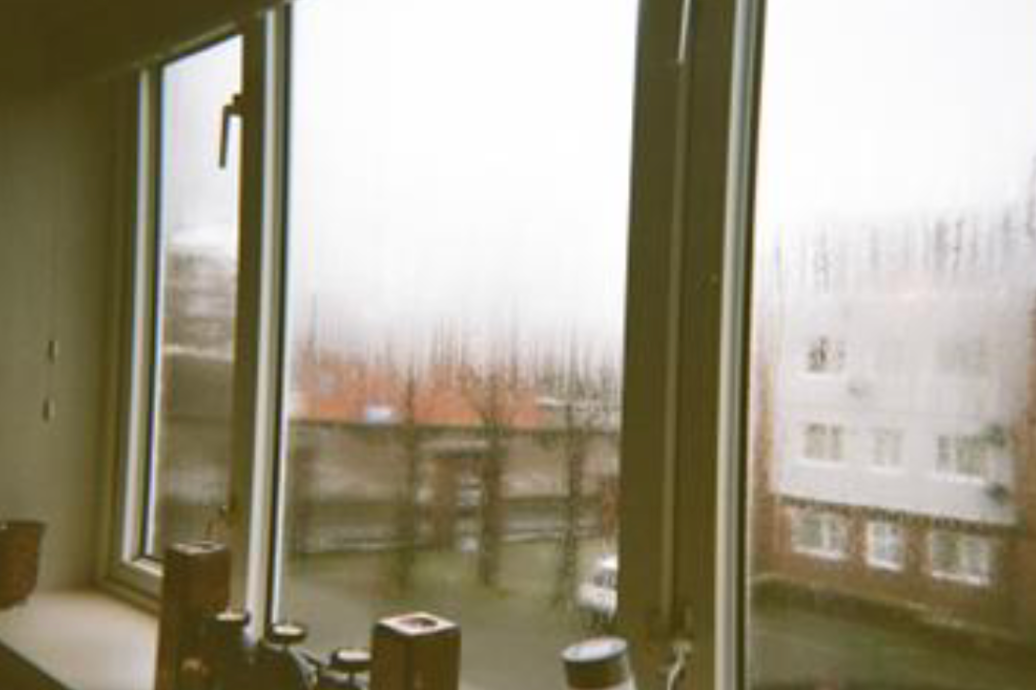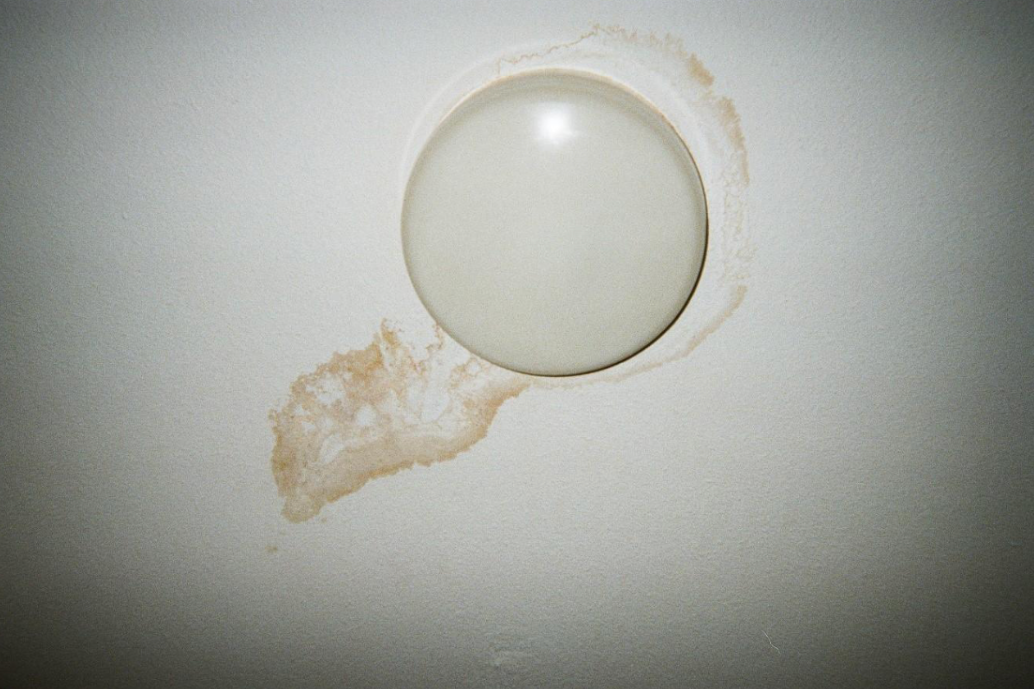What would become of the Civic Offices on Wood Quay if the council relocates?
After The Currency reported the idea of the council moving its HQ, councillors were talking about and thinking through the pros and cons and implications.
“Homes not Hazards” is set for Tailors’ Hall in the Liberties on 28 June.

For Fiadh Tubridy, one of the most affecting photos from the disposable cameras that she recently gave out is of a thermostat with the curly letters “Love” pasted on the wall above it.
“We were like, what?” says Tubridy, who is a researcher on the JustHousing project at Maynooth University and a member of the Community Action Tenants Union (CATU).
“What's the story with this, like, sticker above it? Like the love sticker? Because it's so, like, incongruous,” she says.
Tubridy and Laure Detymowski had at the end of last year and the start of this year given cameras to residents in two social-housing blocks in the city – at Emmet Buildings, and Cromcastle Court – and asked them to document their housing conditions.
The hope, Tubridy says, is to get people to see the maintenance and health crisis in social homes afresh.
The thermostat photo does just that.
The man who took it said it was his partner, Jackie, who had put up the letters. But he would just as well replace it with “hate”, he told Tubridy she says.
Because he can’t control the heating. The thermostat doesn’t work. And, he lost his wife to chronic obstructive pulmonary disease (COPD), which he attributes to the mould and conditions in the council flat, she says.
So many people at Cromcastle Court and Emmet Buildings talk about COPD and respiratory problems triggered by housing conditions, says Tubridy. “It’s just, like, completely chronic.”

On 28 June, from 11am, JustHousing, CATU, and Friends of the Earth are launching “Homes not Hazards”, a one-day photo exhibition in Tailors’ Hall in the Liberties, putting this and other images captured by tenants across the two complexes on display.
"It's hard to summarise how housing conditions impact people,” says Tubridy. “It's a complicated web of issues affecting personal circumstances, health, relationships, and social isolation."
Cromcastle Court has deteriorated so much that some people think it’s already vacant, says Trish Caffrey, one of the residents who took part in the photo project.
“If I say to people that I live in Cromcastle Court, they say, ‘Oh, I thought everyone got moved out there,” she says.
She wants to move too.
She has been emailing the council since 2018 about that, she says. In 2019, she had to have brain surgery.
But she still didn’t qualify for a fast alternative home through medical priority, she says. “Because I can access my bathroom and my kitchen. And everything else is not really their problem.”
“So as far as I was concerned, my health is not important to them,” Caffrey said.
Caffery, too, struggles with the heat control in her flat, she says.
“I'm waking up in the morning, and it's between 24 and 26 degrees,” she says. The high temperature is challenging for her because she can’t regulate her own body temperature well since the surgery.
Her photo in the exhibition shows a dangling bulb and the cracks that reach out from it.
"I have cracks in my living room ceiling and they go right across from the window, right over to my kitchen,” Caffrey says.
There’s so much that could have been included. The filthy stairwells, and brown water filters, she says.
Caffrey has tried to reach out to the council for years to get change and maintenance, she says, but any fixes didn’t last long.
“There is no future for us, as it feels like we're just being forgotten about on purpose,” she says.
Dublin City Council has plans to demolish Cromcastle Court, a social-housing complex built in 1971 with 128 homes spread over eight blocks, and rebuild it in phases.
But Social Democrats Councillor Jesslyn Henry says the regeneration was promised 10 years ago, and it still hasn't happened.
Henry says she grew up in council housing, and has family in Cromcastle. One of her goals is to push for change there, she says.
“For me, it was hugely – it was about health and safety,” she says.
Caffrey said it was when Tubridy started her project that the neighbors started to organise and feel empowered.
They’ve since got their concerns about the conditions at Cromcastle covered by media from RTÉ to the Independent to Dublin Live.
And because of their organising, there’s been progress, says independent Councillor John Lyons.
He said maintenance issues that they have raised for many years are getting answers and attention, tenants who want to transfer out are getting more priority, and council staff have visited and have committed to going back.
“Literally, it's people power. It's people coming together,” he says. "There's strength in numbers.”
Tubridy got involved both as an academic and an activist with CATU, working on housing conditions.
She was doing a project on the history of rent strikes in Ireland. It led her to Cromcastle Court.
“One of the events that was very central was this big eviction resistance in Cromcastle Court in the ’70s, where the council tried to evict this family that was on rent strike there,” she says.
She moved from that research to a survey of present housing conditions, and to campaigns and organising with those in the complex. She didn’t want her history research to just be knowledge for knowledge’s sake, she says.
"Social change comes about through mass movements and people, not through someone writing a policy paper," she said.
But, she said, turning findings into action isn’t common.
“The structures of academia and universities work do not reward that type of approach, because, like, the incentives are very much about, like, getting funding, writing papers,” she says.
She sees it differently though, she says.
Researchers made it clear what the aim was with the photographs, she says. “We were always like highlighting that this is part of, like, building a campaign.”
The photos would be used to show people what the conditions are like, she says. “To put pressure on the council to do what's needed to improve conditions.”

“You can strategically leverage, like, the legitimacy of like, university branding,” she says. “Us having done a survey which has the Maynooth University logo on it like: conditions are shit. It means that it's taken more seriously. And it gets more media coverage.”
There’s another photograph that shows, to her, the level of commitment of everyone involved in the project.
It shows someone sweeping up water that floods their apartment. In that flat, using the bathroom tap can cause water to flood up from the shower.
She was glad the guy who lives there captured it, she says.
“In the middle of this, like, pretty stressful situation, he like, stopped and was like, I'm going to get that disposable camera and take a picture of it,” she says. “Because I guess he wanted it to be, like, documented.
Funded by the Local Democracy Reporting Scheme.